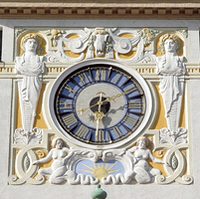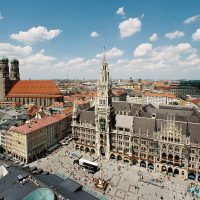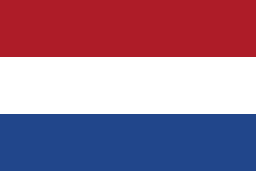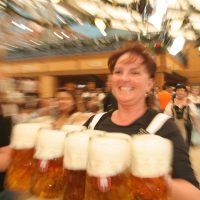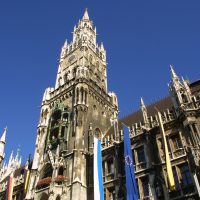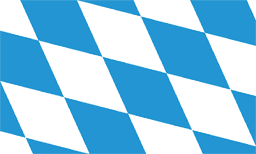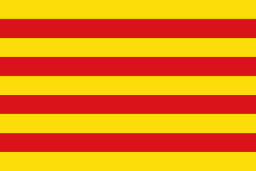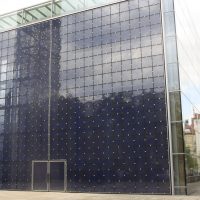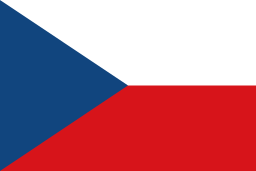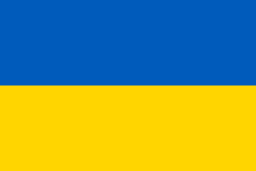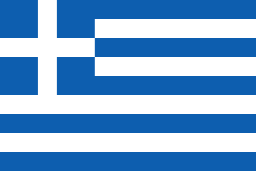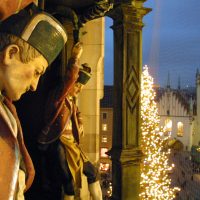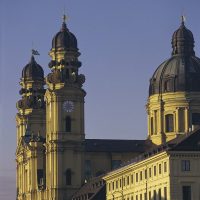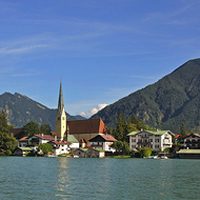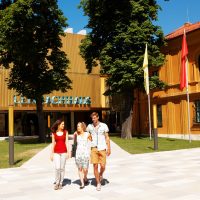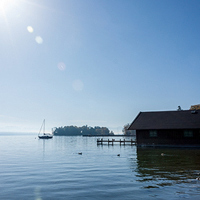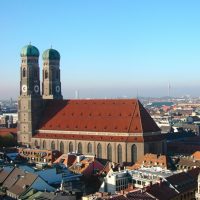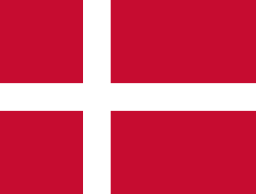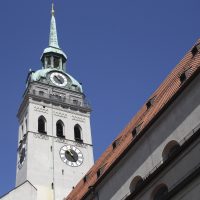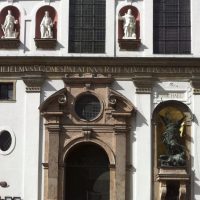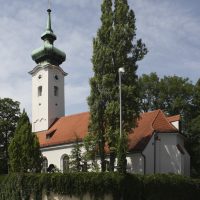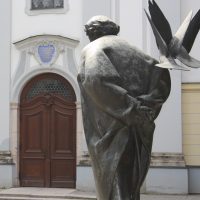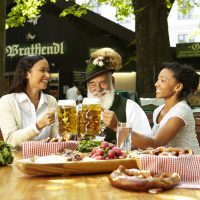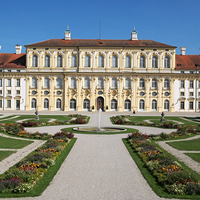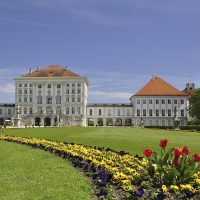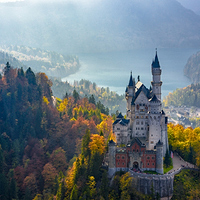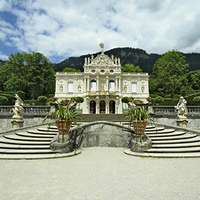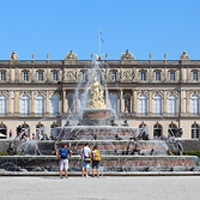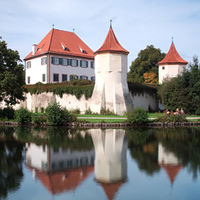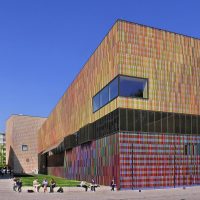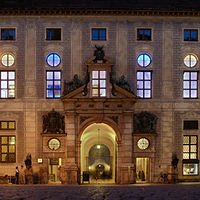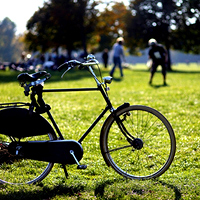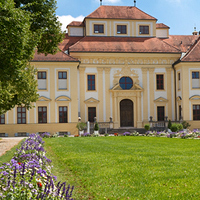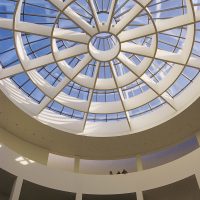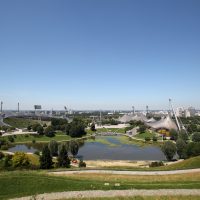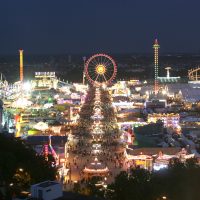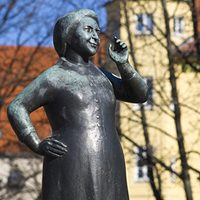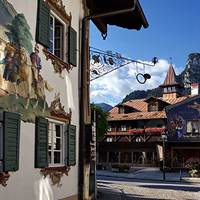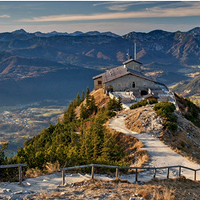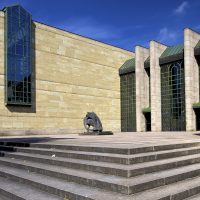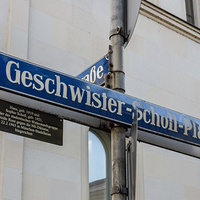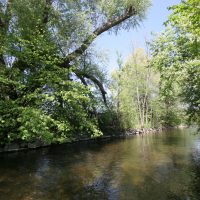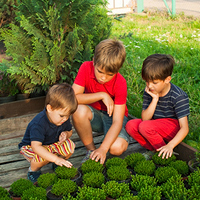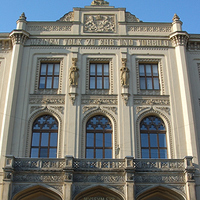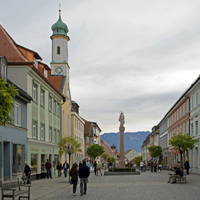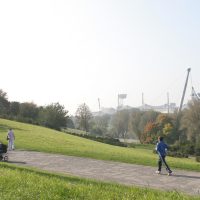“Art Nouveau” is known in Germany under the name “Jugendstil”. Renowned artists contributed greatly to make Munich an important location and even center of art nouveau. Numerous buildings in the city still bear witness of this revolutionary, “scandalous” style, which radically challenged older traditions.
Show Guides for Language:
Take your seats, please! This varied and informative virtual tour provides a convenient and easy way to learn about Munich’s chequered history and see the city’s principal sights.
Show Guides for Language:
The Oktoberfest beer festival in Munich is one of the largest fairs in the world and meanwhile looks back on 200 years of history. It was first held on 12th October 1810 on a field outside Munich’s city walls to mark the wedding of Crown Prince Ludwig I and Princess Therese. In honour of the bride, the site was called “Theresienwiese” (“Therese’s meadow”), leading to the festival name of “Wiesn” used by locals. Hear its history and entertaining stories associated with the Oktoberfest.
Show Guides for Language:
A varied and entertaining circular virtual walk leads you to the principle sights located right in the heart of the the Old City. The real life guide will provide an exciting overview of the rich history of Munich.
Show Guides for Language:
No other district of Munich has so many different faces: Palaces and farmers houses, upscale residential homes and working-class quarters, idyllic village scenery and main roads. The connecting road between the city palace of the royal family in Munich and the summer palace Nymphenburg runs through Neuhausen. This walking tour will take you to the heart of the old village Neuhausen. You will hear stories about famous locals and visit the oldest church (Winthirchurch) as well as the futuristic looking Herz-Jesu-Church. This church is famous for its transparent structure and by now can be found in very many books on modern architecture.
A revolution was on its way after five long winters of war. It was on November 8th. 1918 that King Ludwig III. was forced to abdicate under the pressure of the republican politician Kurt Eisner and the leftwing opposition. It was the declared ambition to end the war immediately and to transform the political system into a parliamentarian democracy. Surprisingly all the goals could be achieved without serious resistance and in a peaceful way.
This tour will focus on the history of Munich around 1900, the spirit of the time prior to World War I. and the way it changed due to political and social catastrophes.
There are several major breweries and countless beer gardens in Munich, and the Oktoberfest is one gigantic homage to the amber nectar. This tour includes qualified beer tastings with detailed information about the history of beer.
Show Guides for Language:
The Wieskirche is the summit of religious art in the Pfaffenwinkel region. In the pilgrimage church and UNESCO cultural heritage site the Brüder Asam heightend the style of Rococo to its most triumphant and grant the beholder a glimpse into the paradise of heaven.
Show Guides for Language:
On this very atmospheric cultural history and culinary tour, you can experience Munich at Christmas time, with mulled wine stands and the fragrance of roast almonds in the heart of the city. On a walk through the Christmas market, including the many stands with nativity sets, you will hear poems and stories about the traditional Munich “Christkindlmarkt”.
Show Guides for Language:
This collegiate church was the official court church and simultaneously the church of the Theatine order and burial place of the Wittelsbach dynasty. It was the first church north of the Alps to be built in the style of Late Italian Baroque. With its light facade the church lends Italian flair to the Odeonsplatz.
Show Guides for Language:
Easy to reach from Munich, Lake Tegernsee is a popular destination for outings, hikes and recreation. For almost 1000 years the whole region around the lake was ruled and dominated by Tegernsee abbey, which used to be one of the most powerful and most influential monasteries in Bavaria.
Show Guides for Language:
The museum gained international renown largely through the world’s most comprehensive collection of works of „der Blaue Reiter“ (the Blue Rider). Around 1900, this Munich group of artists which included, among others, Paul Klee, Wassily Kandinsky, Franz Marc, August Macke, Gabriele Münter und Alexej Jawlensky, looked for new ways of art and expression in rejection of the artistic establishement of their time. Both revolutionary and challenging, their master pieces are shown to advantage in the recently redesigned Lenbachhaus.
Show Guides for Language:
At the end of the 19th century the master painter Franz von Stuck (1863-1928) stood in the very centre of Munich’s high society. He himself designed the studio and living accomodation in his neo-Classicist mansion located in Prinzregentenstrasse in Bogenhausen, which was built in 1897/98. They were groundbreaking and an hommage to art nouveau. To this day the Stuck villa conveys the zeitgeist of the fin du siécle. Its exhibits include the studio and living accommodation with Stuck’s paintings. The inner courtyard and garden have been laid out as shown by historic plans.
Show Guides for Language:
Austrian Empress Sisi spent her childhood at Lake Starnberg, and it was also here that King Ludwig II mysteriously found his death. Writers and artists were inspired by the scenic beauty and the culture of the surrounding towns. Nowadays the lake not only attracts those who want to track down the rich history. It also offers ample opportunities for sports, recreation and art.
Show Guides for Language:
Take your seats, please! This varied and informative coach tour is a convenient and easy way to learn about Munich’s chequered history and see the city’s principal sights.
Show Guides for Language:
The parish church located by Petersbergl in the historic city centre is one of Munich’s major landmarks and is the oldest house of God mentioned as “ze den Munichen” shortly after Munich was founded. It houses outstanding altars and religious works by renowned Munich artists in its magnificent interior. There is a fantastic view of the city from the tower, popularly known as “Old Peter”.
Show Guides for Language:
The Roman Catholic parish church of Saint Michael in Berg am Laim is one of the most magnificent and most significant ecclesiastical buildings within today’s city boundaries. The Late Baroque church was designed by the Bavarian master builder Johann Michael Fischer and built between 1735 and 1751 by order of the Elector and Archbishop of Cologne, Clemens August I of Bavaria.
Show Guides for Language:
Built in the 16th century, this church is dedicated to the Archangel Michael and its architectural style dates back to the time of transition between Renaissance and Baroque. Numerous architectural ideas were inspired by “Il Gesù”, the Roman mother church of the Jesuit order. As a result, the Munich Church of St. Michael, which also was an eminent bastion of the Catholic Counterreformation, became the model for many Baroque churches in the German-speaking regions.
Show Guides for Language:
The parish- and pilgrimage church of Munich Ramersorf is one of the oldest and most important pilgrimage churches of the Archdiocese of Munich and Freising. It is decorated with significant works of religious art by Erasmus Grasser and Jan Pollack.
Show Guides for Language:
The subsidiary church of St. Georg was formerly a village church and is located on the high banks of the River Isar in the north of the historic village centre of Bogenhausen. Inside are significant works of art by Johann Baptist Straub (high altar) und Ignaz Günther (pulpit and Corbinian altar). Today it is primarily known for its artists‘ graveyard, where many famous people are buried.
Show Guides for Language:
This monastery church was built in the 18th century. With a pioneering style, master builder Johann Michael Fischer created the first Rococo church in Old Bavaria, which played a decisive role in the development of ecclesiastical architecture in Bavaria. The oval interior is ornamented with masterworks by the Brüder Asam and Johann Baptist Straub.
Show Guides for Language:
Every day hundreds of spectators admire the Glockenspiel at the Munich townhall with the „Schäffler“ (barrel makers) dancing their famous dance. What do you know about the „Schäfflertanz” and its history? Learn more about living traditions and typical customs which create Munich’s very special flair and lend the city its unmistakable character.
Show Guides for Language:
From an artist’s bohemian idyll to Highlight Towers – enjoy the atmosphere of Schwabing to the right and left of Leopoldstrasse around Münchner Freiheit. A former village outside the gates of the city, it gained literary notoriety in the Prince Regent’s era as an “art town” and is today still one of the most popular Munich districts for students, artists and the “in” crowd. The writer Franziska Countess of Reventlow coined the famous phrase: “Schwabing is not a place but a condition.”
Show Guides for Language:
Schleissheim Palace consists of a complex of three separate magnificent castle buildings dating from the 17th and 18th centuries, linked by a spacious pleasure garden which was built after the model of the gardens of Versailles. To the west lies Old Schleissheim Palace with the neighbouring New Schleissheim Palace and, at the eastern end of the park, Lustheim Palace.
Show Guides for Language:
Gifted to Princess Henriette Adelaide by her husband, Elector of Bavaria Ferdinand Maria, Nymphenburg Palace outside Munich is one of the most magnificent Baroque palaces in Germany. For 200 years it was the summer residence of the Wittelsbach dynasty.
One of its famous attractions is King Ludwig I’s “Gallery of Beauties” as well as the room where King Ludwig II was born. Hidden in the lavish park with promenades and canals there are four maisons de plaisance in Baroque style: Time seems to have stood still in the Amalienburg, Badenburg, Pagodenburg and the hermitage Magdalenenklause.
Show Guides for Language:
Ludwig’s II enthusiasm for an idealised medieval chivalry and his infatuation with the work Richard Wagner’s never found a more perfect symbiosis than in Neuschwanstein. The Castle near Füssen offers a glimpse into the king’s strange world of thought, who within this splendid backdrop of Historism could completely withdraw from the world.
Show Guides for Language:
Linderhof palace is situated near Oberammergau and Ettal Abbey. It is the only of Ludwig II’s castles that was finished during his lifetime. Here he could lose himself in the music of Richard Wagner, to which he rendered homage in several buildings in the park and the famous Venus Grotto.
Show Guides for Language:
Herrenchiemsee in Lake Chiemsee: Monks dwelled there once, before bishops ruled the land. Then King Ludwig II discovered the remote island which soon became one of his favourite places. He bought the island and planned and built Schloss Herrenchiemsee, the most magnificent of his castles, truly a second Versailles.
Show Guides for Language:
This fascinating moated castle complex with the St. Sigismund castle chapel is a masterpiece of Late Gothic. It was built as a hunting lodge in the 15th century by the Wittelsbach Duke Albrecht III. It is surrounded by the River Würm and has a circular rampart, fortified towers and a moat.
Show Guides for Language:
The Schack Gallery was created from the collection of Count Adolf Friedrich von Schack, a patron of the arts. It is located in Prinzregentenstrasse and primarily contains works of Munich and German landscape and historic painters of the 19th century.
Show Guides for Language:
This modern museum building in Munich’s art district houses the collection of the donors, Udo and Anette Brandhorst. Altogether, the collection comprises more than 700 works of art, with a focus on the works of artists who have had a decisive influence on art since 1945.
Show Guides for Language:
The town palace of the Wittelsbach family was the home and seat of government of the Bavarian dukes, electors and kings. It is the largest palace located in a city centre in Germany and houses one of Europe’s major museums of interior design. The museum shows the styles of the palace as they developed over the centuries, with exhibits from the Renaissance, Baroque, Rococo and Classicist periods.
Show Guides for Language:
Cycle gently or with bravado on attractive routes to see Munich’s sights.
Show Guides for Language:
A branch of the National Bavarian Museum is today housed in the former ballrooms of Lustheim Palace in the grounds of Schleissheim Castle. It contains the largest collection of 18th century Meissen porcelain outside Dresden, donated by industrialist Prof. Dr. Ernst Schneider. In the splendour of Lustheim castle the delicate pieces unfold all their beauty and tell of the economical and non-material importance of the „White Gold“ to Europe’s baroque courts.
Show Guides for Language:
This museum at Nymphenburg Castle shows more than 1,000 exhibits from the Nymphenburg Porcelain Manufactory, which was founded in the 18th century. The collection is based on samples assembled by Albert Bäuml, an entrepreneur and director of the Nymphenburg Porcelain Manufactory. Among the highlights are the delicate figurines of the Commedia dell’arte by Franz Anton Bustelli which take today’s beholder back into 18th-century court life.
Show Guides for Language:
The Pinakothek Gallery of Modernism in Munich’s art district houses four museums under one roof – the art, graphics, architecture and design of the 20th and 21st centuries are exhibited in a unique museum building. With works from Modernism to contemporary art by artists such as Pablo Picasso, Mex Beckmann, Joseph Beuys and Andy Warhol, the Pinakothek Gallery of Modernism is the completion of its adjoining elder siblings, the Old and the New Pinakothek.
Show Guides for Language:
Track down the Olympic spirit and the history of the 1972 Summer Olympics and discover Munich’s sporting side in the extensive Olympia Park with its numerous sports facilities and attractions. From the Olympia Tower, you can enjoy a magnificent view of Munich, the BMW World and the unique tent roof of the Olympic stadium.
Show Guides for Language:
The Oktoberfest beer festival in Munich is one of the largest fairs in the world and meanwhile looks back on 200 years of history. It was first held on 12th October 1810 in a field outside Munich’s city walls to mark the wedding of Crown Prince Ludwig I and Princess Therese. In honour of the bride, the site was called “Theresienwiese” (“Therese’s meadow”), leading to the festival name of “Wiesn” used by locals. Hear its history and entertaining stories associated with the Oktoberfest.
Show Guides for Language:
On this tour, you will meet famous and less well-known women closely associated with the history of Munich‘s past and present – wenches, noble ladies, women with a sense of humour, artists and singers of folk songs, business women and nuns, ladies who are/were saints or just sanctimonious.
Show Guides for Language:
Amid the Ammergau Alps, whose beauty also enchanted König Ludwig II, lies Oberammergau. An idyllic example of Old Bavaria, with houses ornamented with Lüftlmalerei (fresco paintings), with a great tradition in wood carving and with an oath, first taken in 1633, to reenact the passion of Christ every ten years, as was done last in 2010.
Show Guides for Language:
After 1933, the Obersalzberg above Berchtesgaden was converted to Adolf Hitler’s secondary seat of government. An elaborately and carefully designed documentary enables the visitor to learn, at the historic site, about the Nazi dictatorship and the dark history of the Obersazberg and the Kehlsteinhaus.
Show Guides for Language:
This collection presents an overview of the epochs of European art from the Enlightenment to the dawn of the era of Modernism and so includes the late 18th, the whole of the 19th and the early 20th century. Together with Classicist paintings and sculptures, works of Romanticism, Art Nouveau and Impressionism are on show.
Show Guides for Language:
This tour addresses the darkest chapter of Munich’s history during the era of National Socialism and the Second World War. It tells of the rise and fall of the „Capital city of the National Socialist Movement” during the dictatorship of Adolf Hitler, the resistance by the “White Rose” Group to which also belonged the siblings Hans and Sophie Scholl, and today’s memorials and monuments, not forgetting those built as a warning to future generations.
Show Guides for Language:
History from the Middle Ages to the present. There’s not only the River Isar flowing through Munich but also a great number of streams, originally natural branches of the Isar which were canalised later on. The streams played a vital role in Munich’s economic development up until the 19th century – our tour focuses on these major arteries.
Show Guides for Language:
Living history during a tour for 10- to 13-year-olds where they can take active part in doing research and a quiz in Munichs old town.
Show Guides for Language:
Discovering Munich with a bag full of surprises: A special tour for 6- to 10-year-olds which gets them to know Munich with all senses. Our bag full of surprises and many local stories will help to become familiar with Munich‘s history in an entertaining way.
Show Guides for Language:
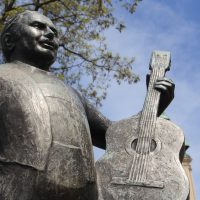
Foto: Reidun Aschenbrenner
It all started with Orlando di Lasso, continued with Mozart and the Cuvilliéstheater, with Richard Wagner and Richard Strauss, and present day’s plans to build a new concert hall are certainly not the final chord in the illustrious musical history of Munich, a music capital which enjoys several operas and top orchestras of international renown.
Show Guides for Language:
With some 150,000 items, the Five Continents Museum, former State Museum of Ethnology, shows the uniqueness and cultural diversity of the world. Its exhibits include artworks and objects of cultural value from non-European countries. Together with special exhibitions, it has permanent exhibitions on Africa, India, East Asia, North and South America, Oceania and the islamic orient.
Show Guides for Language:
Around the year 1900 a group of artists was inspired by the special light and the colours of the prealpine lands and the nearby moor. They settled in Murnau near lake Staffelsee. Wassily Kandinsky, Gabriele Münter and the group „Der Blaue Reiter“ have since been inextricably linked to the pictoresque Bavarian town. They can be tracked down not only in their former home („Münterhaus“) but also in the Murnau Castle Museum.
Show Guides for Language:
Get on your running shoes! You want to discover Munich on the fast lane? Sightrunning?
Follow the tracks of Munich‘s sporty spirit! We show you all parks and green sights in motion.
There is so much to see: You want to enjoy the morning in the English Garden and see the city waking up? You would rather prefer the lanes along the sparkling Isar River in the city center along many famous sights? You want to join the romantic sunset on the Olympic hill in the Olympic Park? What about the historic Nymphenburg Park with its hidden treasures of Bavarian ancestors?
Lets go! We will run and guide you on the nicest tours! An amazing experience!
Show Guides for Language:
